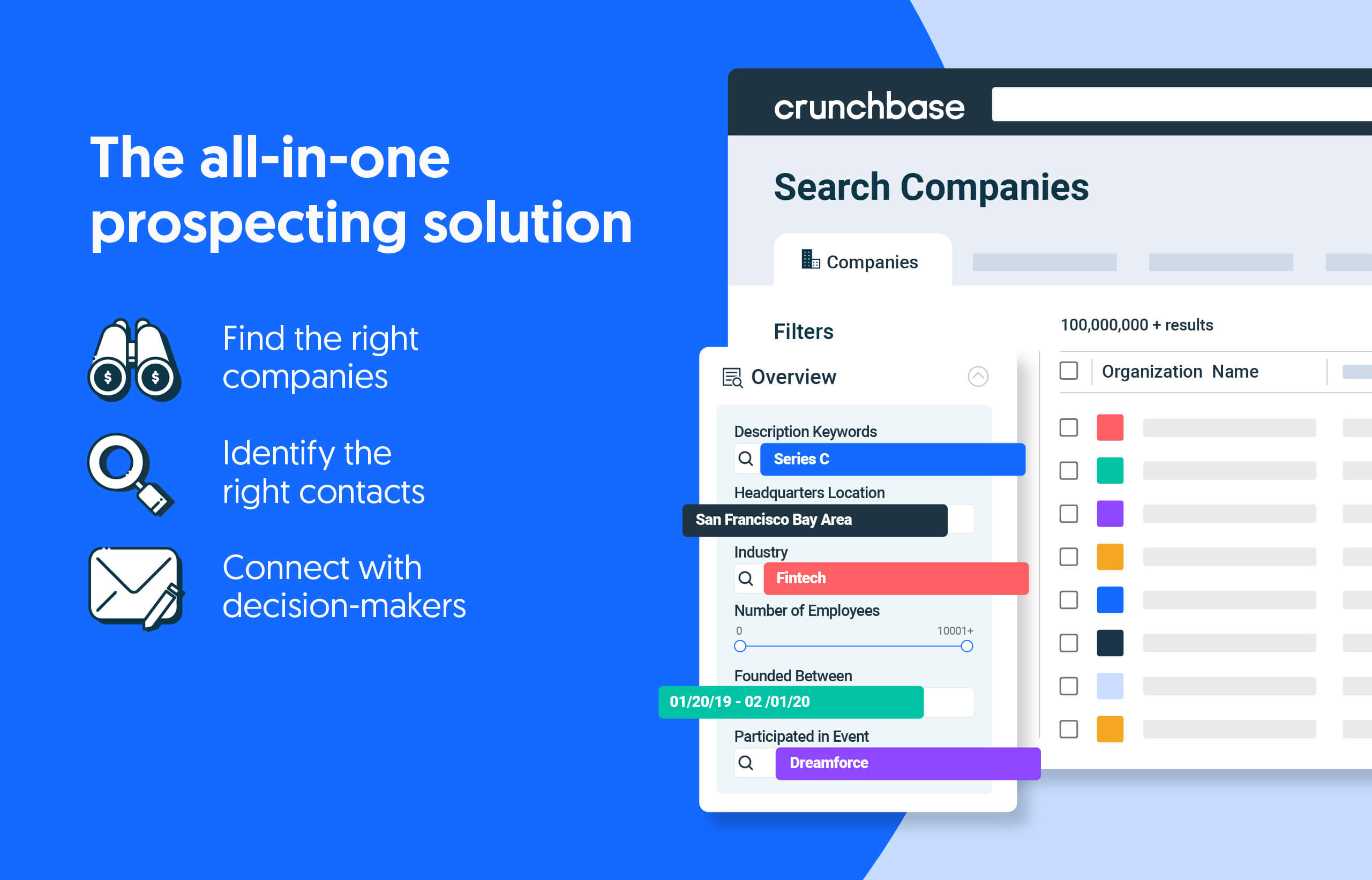This year is off to a bleak start for the startup ecosystem in Europe.
Startups raised $10.6 billion in funding, down 18% quarter over quarter and a whopping 66% year over year, per Crunchbase data, as American investors pulled back.
Europe’s funding downturn is on par with most of the world. Global funding was down 53% year over year, per Crunchbase data, a sign that the tech industry is still reeling from 2022’s high interest rates and broader economic uncertainty.
Search less. Close more.
Grow your revenue with all-in-one prospecting solutions powered by the leader in private-company data.
But we’re starting to see the long-term effects of this uncertainty. European seed funding saw a dramatic 25% collapse last quarter — a signal that VCs aren’t confident in making long-term commitments right now. While late-stage startups experienced the worst funding pullback year over year, early-stage funding performed the best of the three stages (though funding was still down 7%).
Europe is still adjusting to a new funding ecosystem — one that will have to depend less on foreign investments. As a result, deal counts are the lowest they’ve ever been in a three-year period, and companies are incubating strategies to put themselves in the U.S. market.
Table of Contents
- American VC pullback
- Late-stage funding is no longer first priority
- Pullback hits seed stage
- Early-stage companies: the last beacon of stability
- Methodology
- Glossary of funding terms
- Further reading
American VC pullback
When venture funding peaked in 2021, many of the U.S.’ most prominent venture firms looked across the pond for deals.
Francois Veron, managing partner at the France-based venture firm Newfund, estimates around 40% of startup funding in France in 2022 was fueled by venture capital agencies in the U.S. In Q1 2023, that number is likely only 5%, he estimates.
“There is a sense of going back to normal, but actually that will pinch the industry very much,” Veron said. “When you invest in startups, that means that these startups will ask for more money two years after their funding.”
Indeed, European startup funding overall is approaching pre-pandemic levels. Not only are deal counts the lowest they’ve been in a three-year period, Europe’s $10.6 billion in funding is the lowest the continent has seen since Q1 2020, when the region garnered $9.9 billion.
Late-stage funding is no longer first priority
Europe’s early-stage startups have eclipsed late-stage companies in funding — the first time since Q4 2020 — by $600 million.
That’s an interesting point, since late-stage startups have long consumed the majority of venture dollars due to how capital intensive such large startups tend to be.
Late-stage funding has taken quite the beating these last few quarters. Funding in Q1 amounted to $4.3 billion, down 77% year over year in part because pandemic-era inflation put company valuations in a tough spot.
While several big startups such as Klarna and Stripe have incrementally slashed valuations dramatically, it’s still too hard to tell how much these companies are actually worth. That, coupled with fears of conducting a down round, has put funding in this space at a standstill.
Pullback hits seed stage
The seismic impact of the funding pullback has managed to ripple to seed-stage startups, which saw the biggest quarter-over-quarter hit. Funding dropped 25% quarter over quarter and deal count dropped 28% in the same time period.
The seed-stage hit could be read as a sign of worsening investor confidence, with venture firms prioritizing portfolio companies that may need new funding down the line over new investments (however small they may be).
Early-stage companies: the last beacon of stability
Early-stage startups have seen very little fluctuation quarter over quarter — between Q4 2022 and Q1 2023, funding dropped only 7%. That’s a good indication venture firms are heavily prioritizing investment in their existing companies that are perhaps too early stage to have made any revenue yet.
But as they grow, they’re likely to encounter some of the problems late-stage startups see in private market funding. Many are looking West to change that. Veron said VCs are advising their startups to accelerate go-to-market strategies in the U.S., where venture funding is more abundant.
“We’re not just advising [our startups],” Veron said. “We are also continuing our strategy of building a presence in the U.S. and building a network to help our companies scale.”
Methodology
The data contained in this report comes directly from Crunchbase, and is based on reported data. Data reported is as of April 3, 2023.
Note that data lags are most pronounced at the earliest stages of venture activity, with seed funding amounts increasing significantly after the end of a quarter/year.
Please note that all funding values are given in U.S. dollars unless otherwise noted. Crunchbase converts foreign currencies to U.S. dollars at the prevailing spot rate from the date funding rounds, acquisitions, IPOs and other financial events are reported. Even if those events were added to Crunchbase long after the event was announced, foreign currency transactions are converted at the historic spot price.
Glossary of funding terms
We have made a change to how we include corporate funding rounds in our reporting as of January 2023. Corporate rounds are only included if a company has raised an equity funding at seed through a venture series funding round.
Seed and angel consists of seed, pre-seed and angel rounds. Crunchbase also includes venture rounds of unknown series, equity crowdfunding and convertible notes at $3 million (USD or as-converted USD equivalent) or less.
Early-stage consists of Series A and Series B rounds, as well as other round types. Crunchbase includes venture rounds of unknown series, corporate venture and other rounds above $3 million, and those less than or equal to $15 million.
Late-stage consists of Series C, Series D, Series E and later-lettered venture rounds following the “Series [Letter]” naming convention. Also included are venture rounds of unknown series, corporate venture and other rounds above $15 million.
Technology growth is a private-equity round raised by a company that has previously raised a “venture” round. (So basically, any round from the previously defined stages.)
Further reading
- Global VC Funding Falls Dramatically Across All Stages In Rocky Q1, Despite Massive OpenAI And Stripe Deals
- North American Startup Funding Weakens Further In Q1
- Asia Venture Funding Drops 57% Year Over Year, With Late Stage Posting Largest Decline
- A16Z, General Catalyst Top Ranks Of Active Lead Investors
Illustration: Dom Guzman

Stay up to date with recent funding rounds, acquisitions, and more with the Crunchbase Daily.







![Illustration of a guy watering plants with a blocked hose - Global [Dom Guzman]](https://news.crunchbase.com/wp-content/uploads/quarterly-global-3-300x168.jpg)
67.1K Followers